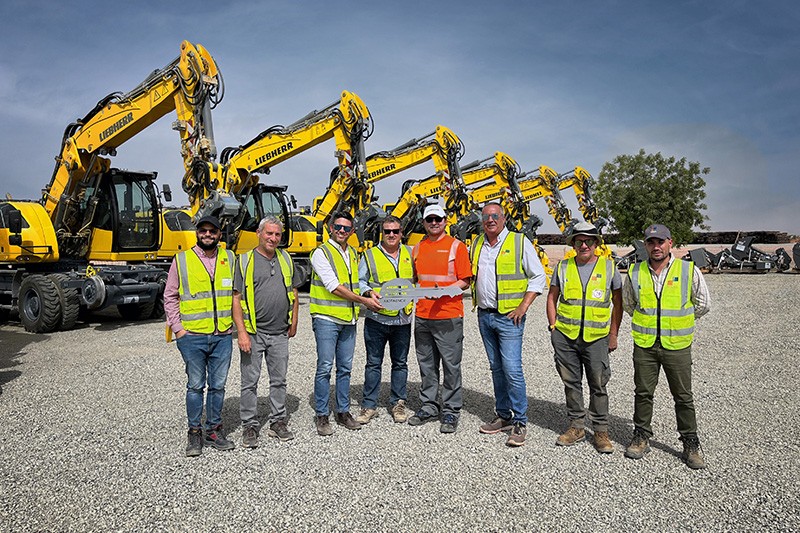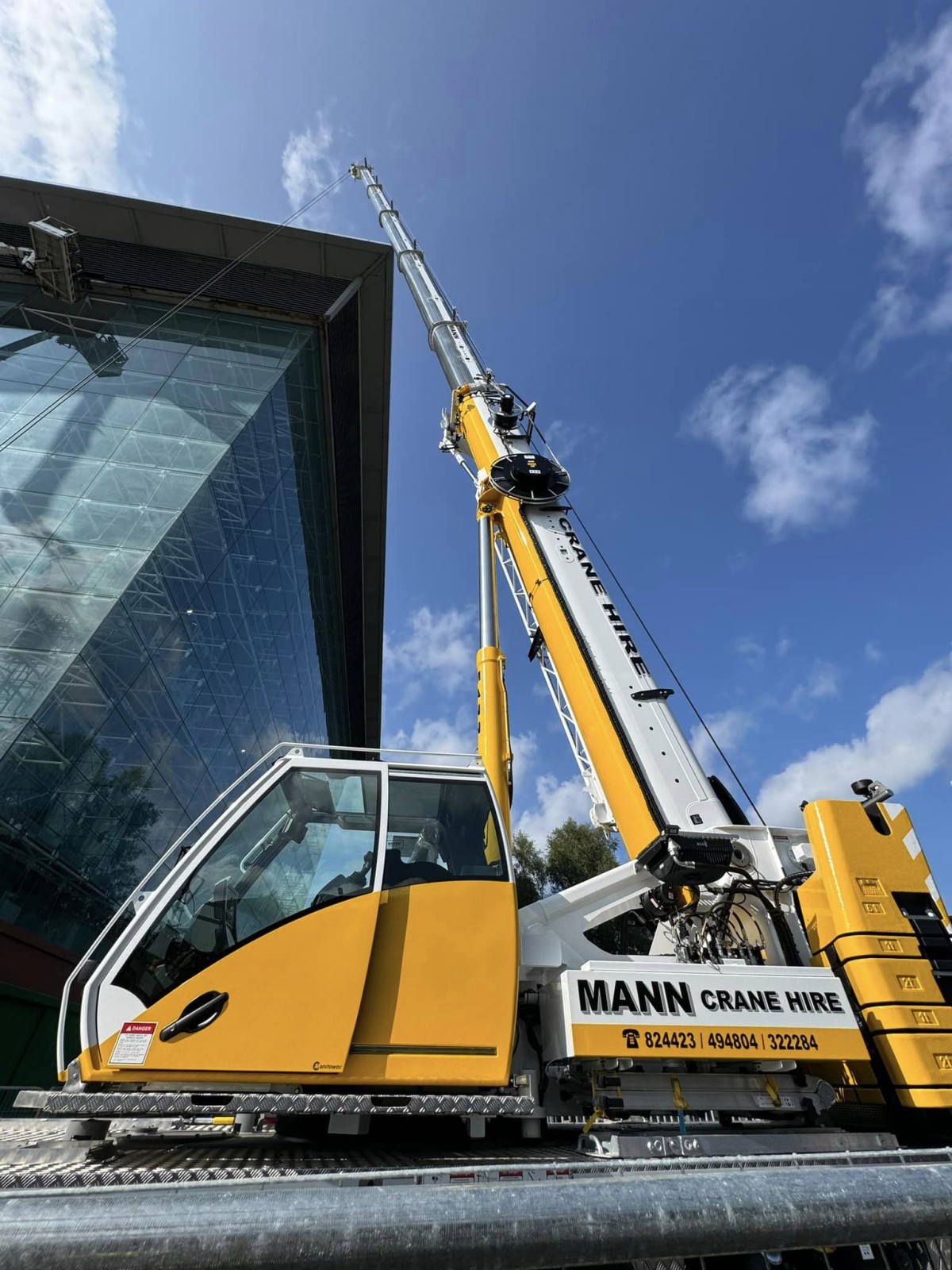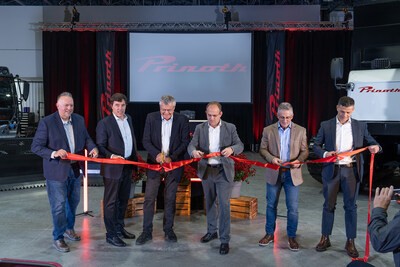Home \ International \ Digitalization on the site!
Digitalization on the site!
31/03/2021
Pubblicato da Redazione
Drone and GPS for more efficiency in excavation pit construction
On an area where gravel was formerly excavated the construction project Pandion Verde is currently being is realized: At the former “Piederstorf” site in Munich’s Neuperlach District, three building complexes comprising a total of six houses and 256 apartments are being built on an area of around 20,000 m2 to harmoniously integrate into the 12.8 ha Alexis Quartier.
Ideally located in the southeast of Munich, right beside the Trudering Forest and close to the city of Munich and the major employers in the north and east of the state capital, the future urban district will create the perfect connection between home, work and lifestyle. To make all of this possible, Bauer Umwelt, the environmental division of Bauer Resources GmbH, was tasked with the construction of an excavation pit. A total of 25,000 m3 of material – of which around 5,000 m3 consisted of concrete demolition – was excavated to a depth of 4 m and disposed of. In addition, a 60 cm thick filter layer was installed to allow rain water to be discharged into the construction soil and the natural aquifer.
“A comparatively simple pit construction,” says Jan Uhlig, Operations Manager at the Bauer Umwelt Division. “But still a true highlight in terms of digitalization”. The secret “star” was a drone – or rather the footage material and data generated by it. This drone was used for surveying the excavation pit and the masses that needed to be moved. “It had a real advantage in terms of speed. Manual surveying methods often take up several days while a drone flight takes just a few minutes and the processing of the data just a few hours,” explains Jan Uhlig. And that’s not all: The amount of detail in the images revealed a discrepancy of a few centimeters between the excavation pit and the design – an immensely valuable information for the execution of the work itself.
But the drone was not the only “star” on the site – it was aided by a GPS-controlled excavator to create the shaping of the excavation base by means of a generated 3D model. “Using the base grade as the foundation level for the actual foundation of a building requires precision,” stresses Erwin Resch, Senior Foreman at the Bauer Umwelt Division. “Every centimeter is precision work to keep tolerances as low as possible.” Once the rough work had been completed with a 35 t excavator, the GPS-controlled excavator was used to work on the finishing touches.
Thomas Erwert had to adhere to a positional accuracy of +/- 2 cm in accordance with the terrain model – no problem for the experienced excavator driver from the Bauer Umwelt Division. Moreover, the GPS control also had a decisive edge in terms of time and cost savings: The excavator driver was able to work selfsufficiently without needing to rely on additional support staff at the site, such as a surveyor for allocating the stake-offs at specified heights of the excavation pit. Disruptions were also avoided as the excavator driver could continually monitor the work progress on the integrated display in real time. The work was mostly completed on schedule in March. Once the shell for the basement is finished, Bauer will install an infiltration chamber over the course of the year.

Ultime notizie di Bauer Macchine Italia
Perforation
30/09/2024
Bauer Spezialtiefbau modernizes John Hart Dam in Canada
Improvement of downstream public safety and facility reliabi...
Perforation
18/07/2024
Bauer secures port project in Scottish town of Ardersier
Bauer constructs diaphragm walls up to 42 m deep and anchor...

Perforation
05/12/2023
Bauer relies on full e-power during Dutch infrastructure project
Innovative electric drill rig from Klemm in operation for th...

Perforation
04/11/2023
Bauer India constructs the deepest diaphragm wall element
Bauer India constructs the deepest diaphragm wall element du...

Perforation
27/10/2023
Klemm Bohrtechnik GmbH celebrates double anniversary
This year, Klemm Bohrtechnik GmbH is celebrating two anniver...

Perforation
26/09/2023
Brownfield Remediation from A to Z on Berlin Airport Grounds
Alongside the operations building, they also needed to disma...
Altri International

International
26/11/2024
Mota-Engil orders 10 Liebherr railroad excavators for a major project in West Africa
The Portuguese construction company Mota-Engil has once agai...

International
25/11/2024
New Grove GMK3060L-1 drives busy schedule for Mann Crane Hire
• Mann Crane Hire selected the GMK3060L-1 for its class-lead...

International
25/11/2024
Prinoth Unveils Expanded Production Facility in Granby, Canada
Prinoth held an event to announce the official opening of it...

International
23/11/2024
GPMat International takes delivery of two Raimondi T147s residential development in the South of France
- Official agent of France expands its product lineup with t...

International
22/11/2024
Sarens acquires additional SCHEUERLE SPMT K24 modules
renowned for its expertise in crane rental services, heavy l...
International
22/11/2024
Five WOLFF cranes modernize Oslo’s Ulven district
With a total of five WOLFF cranes of type 7534.16 Clear, Wol...









































